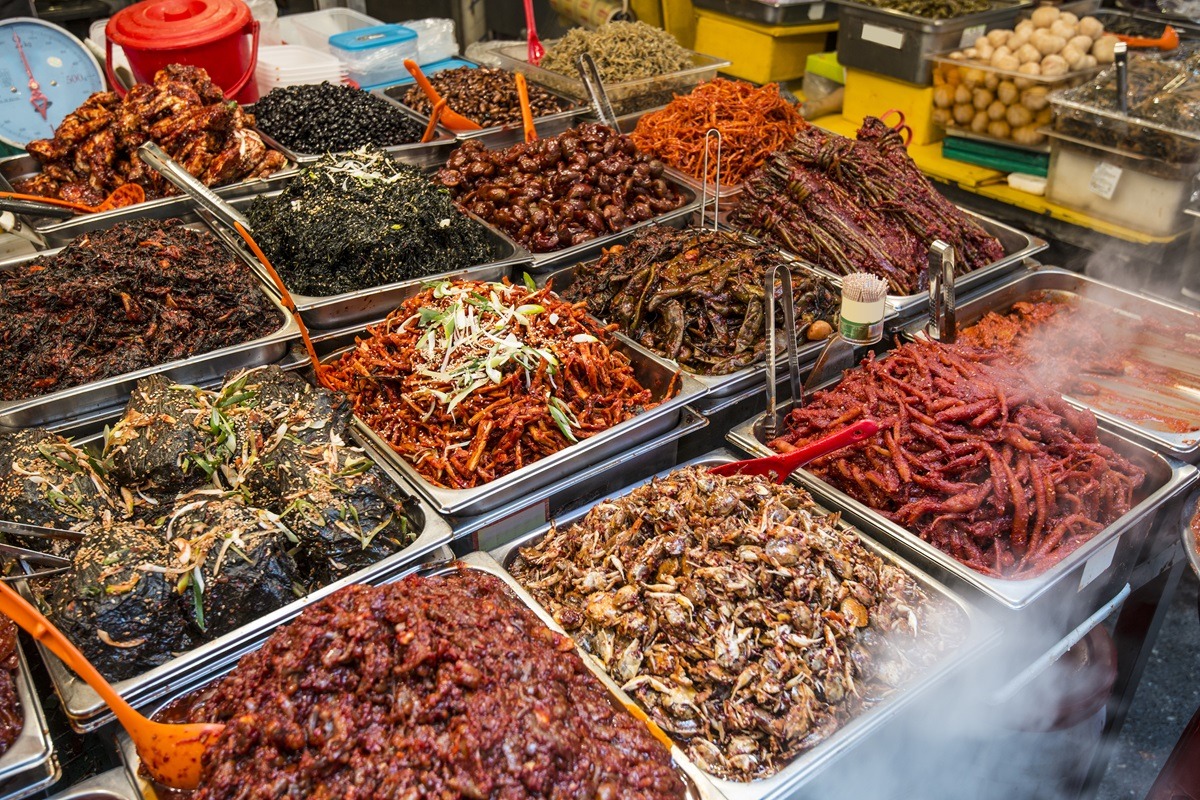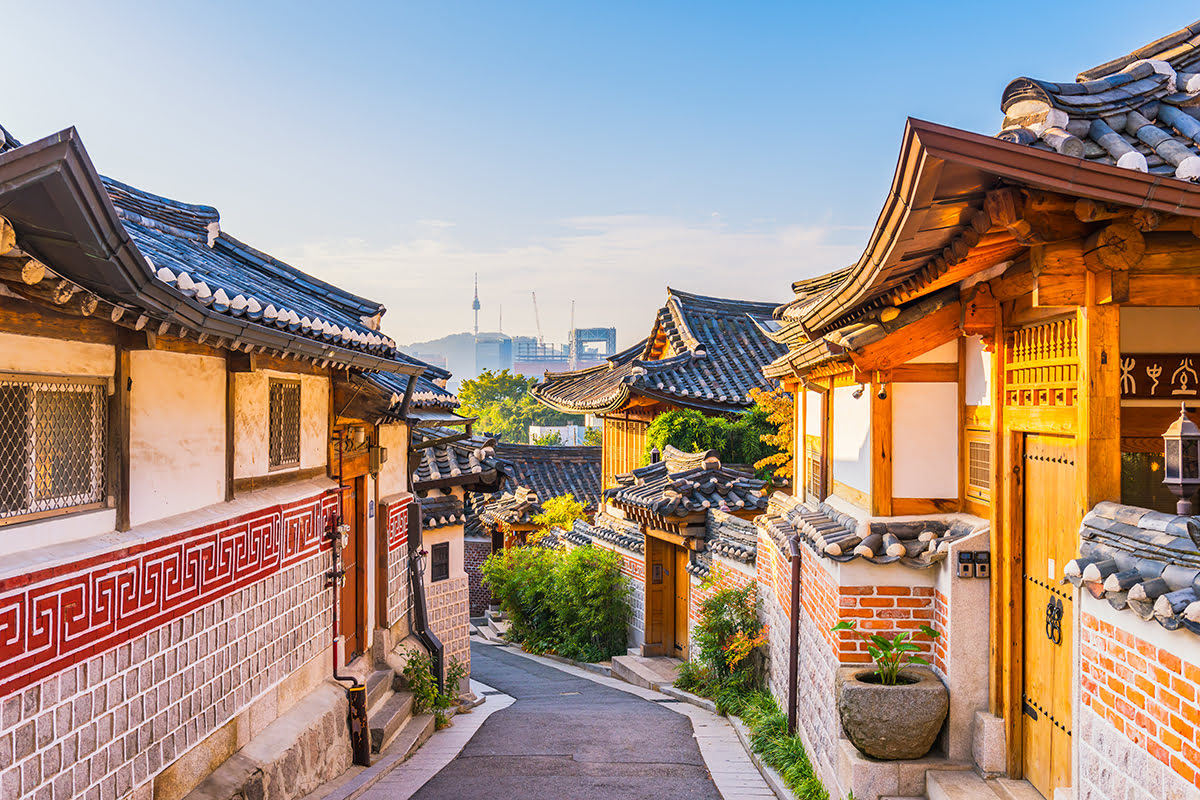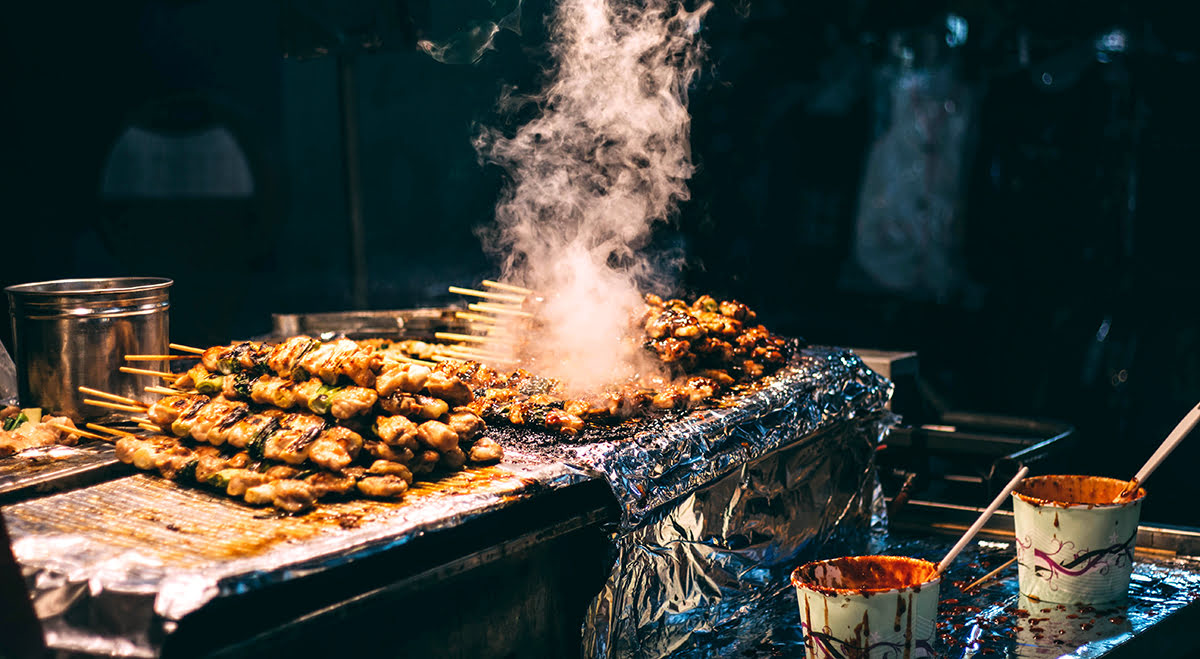Welcome to the tantalizing world of Korean cuisine! This guide will take you on an unforgettable culinary adventure across Seoul and nearby cities, from bustling street food markets to sophisticated fine-dining establishments. Let’s embark on this gastronomic journey!
Day 1: Seoul – A Feast for the Senses
Morning: Traditional Korean Breakfast
Begin your day with a traditional Korean breakfast at Seoul Ttukbaegi, where you can savor a variety of dishes that make up a typical Korean morning meal. This place is renowned for its authentic food experiences and gives you a true taste of local life.
Mid-Morning: Gwangjang Market – The Street Food Haven
Head over to Gwangjang Market, one of Seoul’s oldest and most vibrant street food markets. Indulge in Bindaetteok (mung bean pancakes), Mayak Kimbap (addictive bite-sized gimbap), and Tteokbokki (spicy rice cakes). The market is a paradise for food lovers with its wide array of stalls offering traditional Korean delights. Don’t forget to try Hotteok (sweet pancakes) for a delightful treat.
Lunch: Savoring Bibimbap in Insadong
For lunch, make your way to Insadong, a district known for its traditional culture and art. Here, dine at a local restaurant and try Bibimbap, a colorful mix of rice, vegetables, meat, and a spicy sauce. Insadong’s charming alleyways and historic buildings provide the perfect backdrop for an unforgettable meal.
Afternoon: Tea Time at a Korean Tea House
After lunch, take a leisurely stroll to a traditional Korean tea house. Enjoy a serene break with a cup of Da Hong Pao or Jakseolcha (green tea) and delve into the calming atmosphere of these cultural havens. Tea houses in Seoul often feature beautiful interiors and provide a perfect respite from the city’s fast pace.
Evening: Korean BBQ Dinner in Hongdae
As the evening sets in, head to Hongdae, known for its youthful energy and vibrant nightlife. Experience an authentic Korean BBQ dinner at one of the many popular BBQ joints. Grill your choice of meats, ranging from Samgyeopsal (pork belly) to Bulgogi (marinated beef), right at your table while enjoying a variety of side dishes and dipping sauces.
Night: K-Pop and Nightlife
Conclude your first day with a taste of Seoul’s exciting nightlife. Hongdae is famous for its live music, clubs, and K-Pop dance performances. Whether you prefer a cozy jazz bar or a lively club, you’ll find something to enjoy in this bustling district.
Day 2: Historical Flavors and Modern Twists in Seoul
Morning: Bukchon Hanok Village and Traditional Korean Sweets
Start your day with a visit to Bukchon Hanok Village, a picturesque area filled with traditional Korean houses known as hanoks. While exploring the charming alleyways, stop by a hanok tea house to enjoy traditional Korean sweets like Yaksik (sweet rice cake with nuts and dried fruits) and Dasik (tea cookies).
Mid-Morning: Gyeongbokgung Palace and Bibimbap
Next, head to the magnificent Gyeongbokgung Palace, the largest of the Five Grand Palaces built during the Joseon Dynasty. After exploring the palace grounds, enjoy a bowl of Bibimbap at a nearby restaurant. This quintessential Korean dish features a harmonious blend of rice, vegetables, meat, and a spicy sauce, all topped with a fried egg.
Lunch: Modern Korean Cuisine in Itaewon
Head to the eclectic district of Itaewon for a modern twist on traditional Korean cuisine. Visit a contemporary restaurant like Vatos Itaewon for a fusion of Korean and Mexican flavors or try Maple Tree House for a refined Korean BBQ experience.
Afternoon: Exploring Insadong’s Tea Culture
After lunch, make your way to Insadong, a district famous for its traditional culture and tea houses. Spend the afternoon sipping on various Korean teas such as green tea (nokcha), barley tea (boricha), and jujube tea (daechu-cha), and enjoy the serene atmosphere of a traditional tea house. Learn about the historical significance and health benefits of these teas.
Evening: Fine Dining at a Michelin-Starred Restaurant
For dinner, treat yourself to an unforgettable dining experience at one of Seoul’s Michelin-starred restaurants. Jungsik offers a modern take on Korean cuisine, blending traditional flavors with contemporary techniques. Alternatively, try Mingles, where the chef combines Korean and European flavors to create innovative dishes that will tantalize your taste buds.
Night: Cocktails and Craft Beverages in Gangnam
Cap off the day in the vibrant district of Gangnam, renowned for its upscale nightlife and trendy bars. Visit a chic speakeasy or a rooftop bar and indulge in creative cocktails and craft beverages. Don’t miss the chance to try Korea’s traditional alcoholic drinks like Soju and Makgeolli (rice wine) in a modern setting.
Day 3: Culinary Adventures Beyond Seoul
Morning: Traditional Market Visit in Suwon
Start your day with a trip out of Seoul to Suwon, a city known for its rich history and delicious food. Visit Suwon’s Hwaseong Haenggung Palace and then explore the nearby Paldalmun Market. Sample fresh local produce, street food, and traditional snacks like Hoddeok (sweet pancakes) and Hotteok.
Mid-Morning: Suwon Galbi Experience
Suwon is famous for Suwon Galbi (grilled ribs). Make sure to visit one of the renowned local restaurants to try these perfectly marinated and grilled ribs. Pair your galbi with a selection of Banchan (side dishes) for a truly memorable meal. Suwon Galbi is known for its unique flavor and tender texture.
Lunch: Seafood Extravaganza in Incheon
Continue your culinary journey to Incheon, located on the coast and known for its seafood. Head to Sorae Fish Market for a seafood feast. Choose from live fish, shellfish, and other seafood delicacies that can be prepared fresh for you on the spot. Try the Hoe (raw fish) and Jjigae (stews) for an authentic taste of Incheon’s marine bounty.
Afternoon: Coffee Culture in Bucheon
After lunch, take a short trip to Bucheon, a city famous for its vibrant coffee culture. Explore unique and cozy cafes that offer a variety of coffee blends and pastries.
Evening: Myeongdong Night Market
Travel back to Seoul and visit Myeongdong Night Market. Experience the lively atmosphere and indulge in various street foods such as Chuncheon Dakgalbi (spicy stir-fried chicken), Hotteok (sweet-filled pancakes), and Jipangyi Ice Cream (cane-shaped ice cream cones). Seoul‘s street food scene is a perfect reflection of its rich culinary heritage.
Seoul’s culinary landscape is a vibrant tapestry of flavors, textures, and aromas that offer an unforgettable gastronomic journey. Whether you’re savoring a bowl of bibimbap, indulging in Korean BBQ, or exploring a traditional tea house, there is always something new and exciting to discover. So pack your bags, bring your appetite, and get ready to embark on a delicious adventure that you’ll cherish forever.























